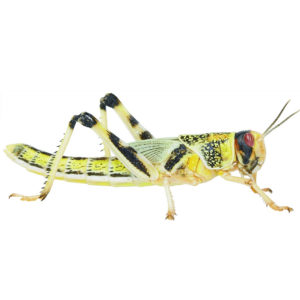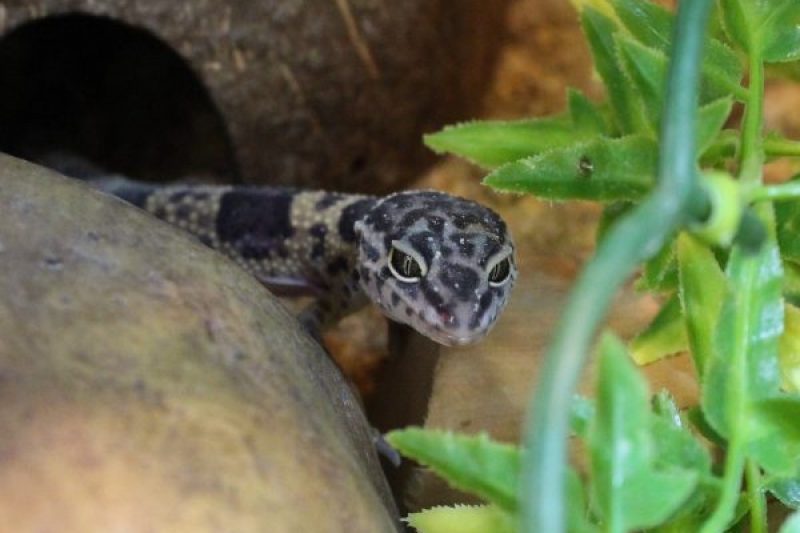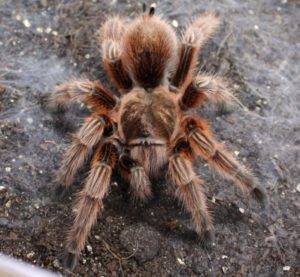
Live food Loyalty Program — Only at Our Kidlington Store!
Calling all reptile keepers and bug lovers! Stock up and earn rewards every time you purchase live foods in-store. 🦗 Get 50 Bonus Points When

We all want our pets to be happy. Whether it’s a wagging tail, a happy purr or a lizard relaxing on a branch, we want to be able to provide them not only with what they need to survive but thrive and enjoy life. However, stress can make that impossible or harder to achieve, which is why you need to know how to relieve their stress.
A lot of older advice is excessively simplistic. Yes, if you provide a new snake two hides and a water bowl, you are meeting its very basic needs. Will that make it comfortable enough to express natural behaviour? Possibly. It depends on the snake.
Once we move onto more emotionally complex creatures such as many of the lizards, such an approach is less satisfying.
You can provide the basics – heat, food, water, space – and still have a stressed pet. And whilst dealing with stress is built into every organism, constant low-grade stress can (and does) kill.
To relieve their stress, you must know the basics.
This is not always a simple task! A dog will pace and whine, but we are dealing with more than one species here, and they are all different. However, there are a few generalities to look out for.
The first – and most important – is to know your reptile. Not so much the individual animal (although that is vital later on, once you have brought it home), but familiarise yourself with where it comes from in the wild, what it would be feeding on, whether it’s active in the day or night. This isn’t as hard as it used to be; for this sort of general information, the internet is a wonderful thing!
So if your gecko is nocturnal (as most of them are) and it’s always out and about during the day scratching at the walls, the chances are that it’s not happy about something. It will probably be looking for a hiding place, or somewhere it can feel safe and be at the correct temperature all at the same time. Now is the time to look at your pet’s home with a fresh eye, and see where it can be improved.
So how can we make our pets feel safe, happy and secure in their homes?
We cannot emphasise this one enough! All reptiles are totally dependent on their environment to bring their bodies to the correct operating temperature. If they are too cold (or too hot!) they cannot digest their food, regulate their systems, or behave normally. This causes stress, and eventually, they get sick.
If the temperature is too low, the reptile’s body will slow down. It will digest food less efficiently, poo less often, and the immune system will be suppressed. Just a little too low will kill – eventually. And whilst we think ‘hot is good!’ for reptiles, that isn’t always the case; yes, they like their heat, but unless they can get away from it then the effects can be drastic. Cold kills slowly – heat kills fast.
So, temperature! Get a good digital thermometer and keep an eye on what the temperature is doing. Warm end, cool end, high up, low down, daytime, nighttime. If it needs to be changed, we can help you achieve your goal.
There are some excellent articles out there on the importance of UV lighting. Yes, we are aware that many species can be kept and bred without it – but it’s steadily becoming apparent that they will do so much better when they have it. Once again, consider adding species-appropriate UV lighting, and if you already own a diurnal reptile, then check that you are providing enough. A compact 5% UV bulb is effectively useless for a tortoise but works very well indeed for a crested gecko.
This is a wonderful website that goes into great detail on the subject but is written in very accessible language: http://www.uvguide.co.uk/index.htm.
The basking light is also important, not just for providing that all-important hot spot in the environment, but also for stimulating normal behaviour. Our animals evolved to use natural sunlight; they are solar-powered. They also see colour far, far better than we do – all the way into the ultraviolet for most lizards. So often what appears to our limited vision as white light is anything but; this is where the bulbs specifically designed for reptiles score so highly, as they are much closer to a natural spectrum.
Please, please leave the red bulbs where they belong – in the past! If we spent all our lives in a room with no windows and just a red light we’d survive, but we wouldn’t be very happy. It’s the same for your pet.
White light and darkness. Day and night!
What you put on the floor can make an enormous difference to the well being of your pet. Very few pet animals are from species that live in true deep sand deserts, although a large number of them are desert and arid habitat species. If you’ve ever been fortunate enough to visit the areas of Australia where beardies live, what’s on the ground? Dirt, rocks, dust, gravel – some sand, but not much.
Once again, five minutes with a search engine can be very enlightening. Even looking at pictures of the area where your species originally came from is incredibly helpful; we can’t totally recreate that habitat, but it gives us a really good shove in the right direction!
There are many more substrates available to the modern reptile keeper; different grades, different soil-based mixes, and extras that can be mixed in to not only approximate that wild flooring, but make your life as a keeper easier too.
If your animal would dig out a hollow to rest in, it’s going to be frustrated by tiles. If it would burrow through leaf litter, then sand that collapses and won’t hold a burrow will cause it stress. Look at what their ancestors evolved with – there’s a product out there that will approximate it, and we can help you find it.
Possibly this section could be called decor, but what it boils down to is giving your pet somewhere to hide. With fish, the more hiding places you give them the more you see them; it seems strange, but if they are very close to a bolt hole they are more relaxed at being out in the open, and so you see them more. It’s the same with your reptile pet.
All of our pet reptiles are eaten by something in the wild! They have all developed behaviours that will keep them safe when that hawk, or snake, or other predatory animal wanders past looking for a meal.
For most animals, that involves getting out of sight. We know that there are no predators in the environment that we have so lovingly crafted, but our pets do not – so we need to help them feel safe enough to express all their natural behaviours without fear.
There are the traditional coconut hides or resin caves, but consider all items with an eye to their value to your pet as a hiding place. Snakes in the wild are often found under logs or rocks; a pile of cork bark pieces gives that same level of security, without being heavy enough to damage the animal should it fall over.
Often, just being able to duck out of your eye line can be enough. (If they can’t see you, they think you can’t see them.) So a large branch can serve a dual purpose as a basking platform and hiding place. Fake foliage can allow them to rest in speckled shade, still gathering UV light through their skin even as they doze the day away in comfort.
Once again, look at the wild relatives! Do they live up a tree, down a burrow? Whilst we can’t exactly create that burrow or tree canopy, we can certainly manage to recreate the most important elements. You can never have too many hiding places.
Consider their wild ancestors, and don’t be content to follow the old ‘red bulb and two cardboard boxes’ school of thinking. There are so many ways to create an environment that will keep your reptile happy – why not try a few?
Lower stress = better welfare. Isn’t that what we’re all trying to achieve?
For more tips on taking care of reptile, check our care hub.

Calling all reptile keepers and bug lovers! Stock up and earn rewards every time you purchase live foods in-store. 🦗 Get 50 Bonus Points When

Welcome to Evolution Reptiles’ guide to tarantula care! Whether you’re a seasoned arachnid enthusiast or just starting your journey into the fascinating world of these

Why Do UVB Lamps for Reptiles Need to Be Replaced and How Often UVB lamps are essential for the health and well-being of reptiles, but
Copyright 2021 Evolution Reptiles
All rights reserved.